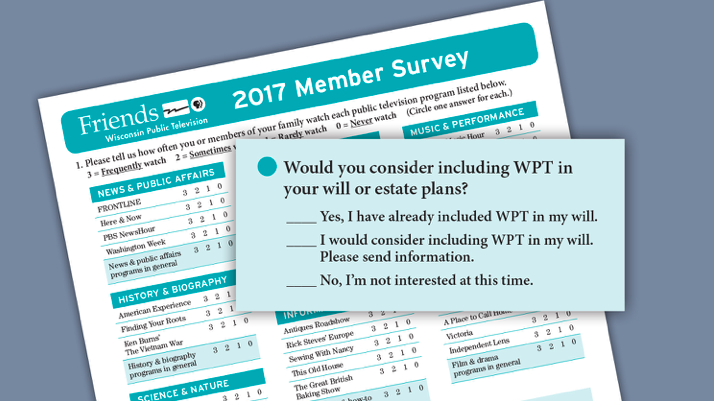Related Articles
Subscribe to the Greater Public newsletter to stay updated.
This site is protected by reCAPTCHA and the Google Privacy Policy and Terms of Service apply.

For most organizations, the opportunity that awaits in planned giving is tremendous. It’s not uncommon for a station to have more interest from donors than there are resources to follow up on. The following suggestions come from the major and planned giving team at Wisconsin Public Television as part of the PMDMC 2018 session “Turn Up the Volume on Planned Giving.” These are a few simple ideas for how to capture and cultivate donor interest in planned giving.
Being truly donor-centric in everything you do extends to how conversations take place internally. Wisconsin Public Television has chosen to be conscious about how it refers to its donors, never focusing on “getting” a gift, but always on the donor’s act of “giving” a gift. Even choices in language help transmit your team’s values and can be felt by the donors you’re working with.
The WPT team likes to think of a quote by Fred Rogers of “Mr. Rogers’ Neighborhood”:
“As human beings, our job in life is to help people realize how rare and valuable each one of us really is, that each of us has something that no one else has – or ever will have – something inside that is unique to all time. It’s our job to encourage each other to discover that uniqueness and to provide ways of developing its expression.”
[Continued below…]
Helping a donor to discover what their gift might be is an opportunity and a privilege for any major or planned giving professional.
Cultivating planned giving leads may not be as challenging as following up on those leads (more on the follow-up in a moment). In fact, identifying interest in planned giving can be incredibly easy. Add a few simple questions to your existing channels of communication like this:

Try including these questions in the materials you already have:
Include your planned giving information so people can give it to their financial planners on their own, should they want to. And don’t be shy about featuring the name and photo of your team’s planned giving point person whenever possible. This establishes a relationship between the donor and your staff before contact is even made.

Many organizations struggle to find the capacity to follow up on all of the planned giving leads that they receive. WPT’s planned giving team evolved over time to split back-end and public-facing responsibilities.
WPT planned giving associate Erica Lee – a self-professed data geek – stays in the office to answer the phone, deal with forms, and otherwise identify leads. This frees up legacy giving manager Aimee Granger to be exclusively in the field meeting people and cultivating those leads. This two-person pipeline increased involvement in the station’s planned giving program substantially.
As is the case at many public media organizations struggling to reach their major and planned giving potential, WPT let many planned giving leads languish for years because they simply didn’t have the structure or capacity to connect with interested donors. These few changes in staff structure and approach have allowed them to change that, and could help your organization too.

New to Greater Public? Create an account.